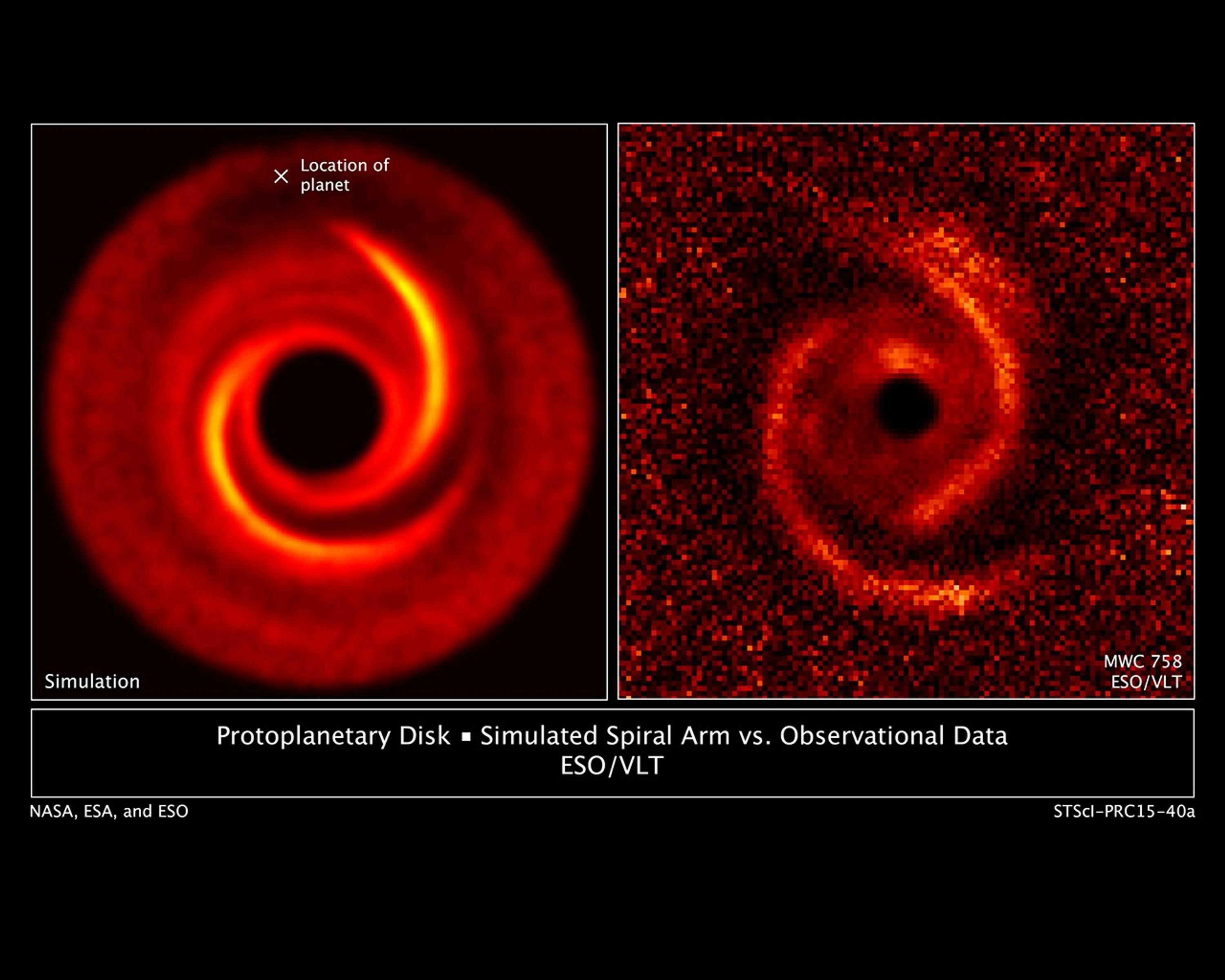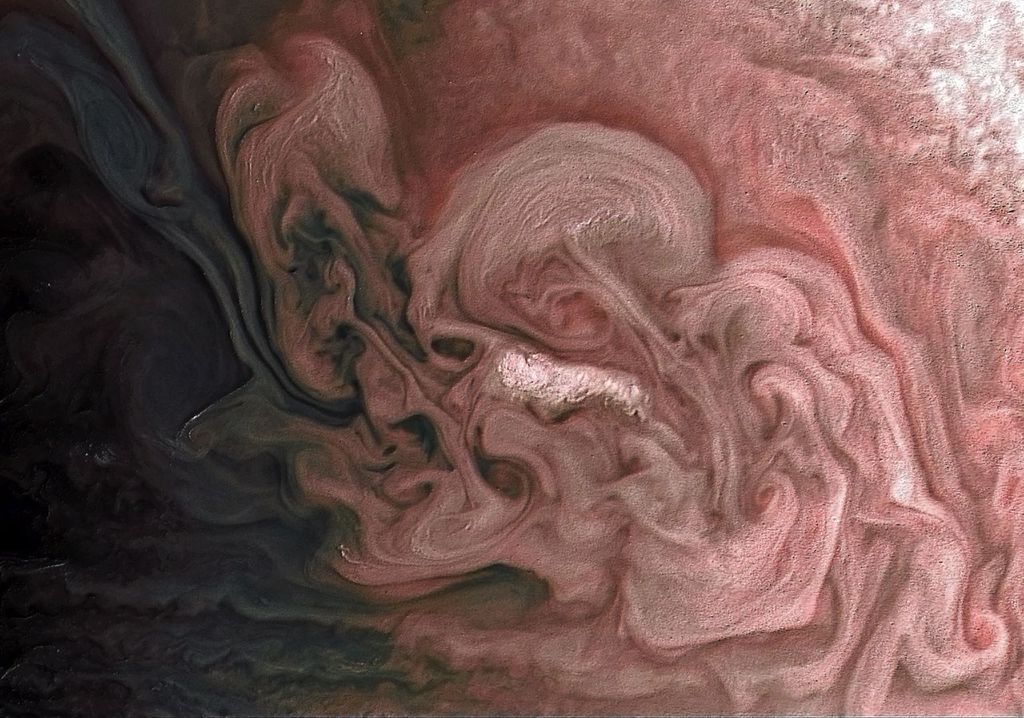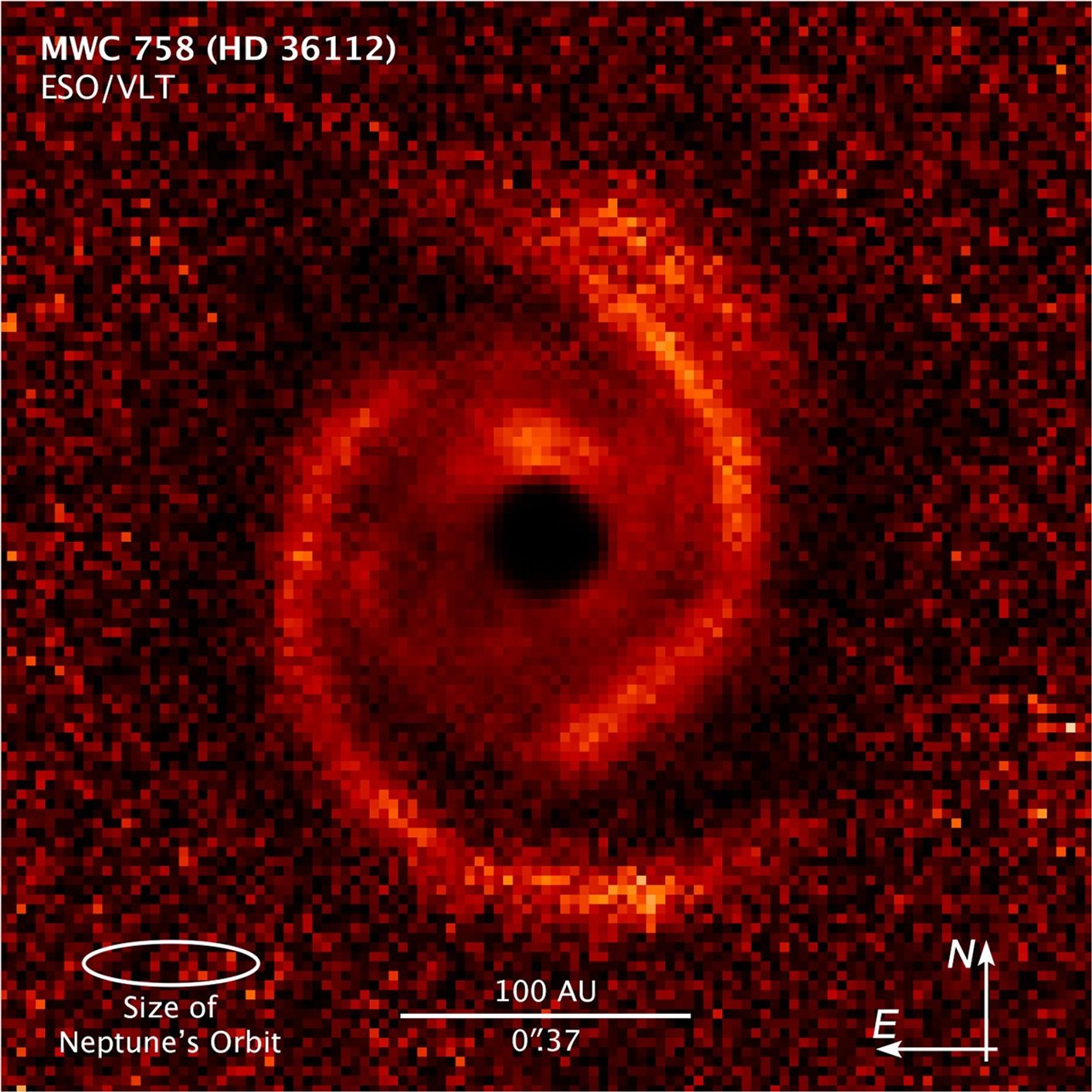1 min read
Protoplanetary Disk: Simulated Spiral Arm vs. Observational Data

[Right] – Observations taken by the European Southern Observatory's Very Large Telescope show a protoplanetary disk around the young star MWC 758. The disk has two spiral arms that extend over 10 billion miles from the star.
[Left] – A computer model reproduces the two-spiral-arm structure; the "x" is the location of a putative planet. The planet, which cannot be seen directly, probably excites the two spiral arms.
About the Object
- R.A. PositionR.A. PositionRight ascension – analogous to longitude – is one component of an object's position.05h 30m 27.53s
- Dec. PositionDec. PositionDeclination – analogous to latitude – is one component of an object's position.25° 19' 57.08"
- ConstellationConstellationOne of 88 recognized regions of the celestial sphere in which the object appears.Taurus
- DistanceDistanceThe physical distance from Earth to the astronomical object. Distances within our solar system are usually measured in Astronomical Units (AU). Distances between stars are usually measured in light-years. Interstellar distances can also be measured in parsecs.650 light-years (200 parsecs)
About the Data
- Data DescriptionData DescriptionProposal: A description of the observations, their scientific justification, and the links to the data available in the science archive.
Science Team: The astronomers who planned the observations and analyzed the data. "PI" refers to the Principal Investigator.The science team comprises R. Dong (Lawrence Berkeley National Laboratory), and Z. Zhu, R. Rafikov, and J. Stone (Princeton University). The VLT image of MWC 758 is credited to NASA, ESA, ESO, M. Benisty et al. (University of Grenoble), R. Dong (Lawrence Berkeley National Laboratory), and Z. Zhu (Princeton University). - InstrumentInstrumentThe science instrument used to produce the data.ESO/VLT>SPHERE
- Exposure DatesExposure DatesThe date(s) that the telescope made its observations and the total exposure time.December 5, 2014, and March 3, 2015
- Object NameObject NameA name or catalog number that astronomers use to identify an astronomical object.MWC 758
- Object DescriptionObject DescriptionThe type of astronomical object.Young star with protoplanetary disk
- Release DateOctober 29, 2015
- Science ReleaseSpirals in Dust Around Young Stars May Betray Presence of Massive Planets
- Credit

Compass and Scale
Compass and ScaleAn astronomical image with a scale that shows how large an object is on the sky, a compass that shows how the object is oriented on the sky, and the filters with which the image was made.
Share
Details
Last Updated
Aug 17, 2025
Contact
Media
Claire Andreoli
NASA’s Goddard Space Flight Center
Greenbelt, Maryland
claire.andreoli@nasa.gov

































